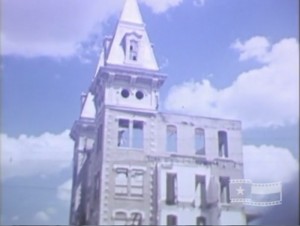
"This collection of 16mm clips was originally shot and compiled in the 1950s by W.H. Tilley. Footage features images of downtown St. Louis (including St. Louis Union Station), Philadelphia's Independence Hall, 'Demolishing of Deaf School' (1956), the Texas State Capitol and Congress Avenue, Barton Springs (1953), exterior and interior views of the Tilley home (1953), the flag and Capitol building at sunrise, and sightseeing in Montreal (including parades, a carriage, and views from Mt. Royal)" Texas Archive of the Moving Image.
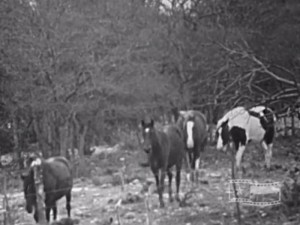
"This amateur film chronicles several young ranchers in their day-to-day activities. The film is divided into six chapters, each highlighting a different theme. Setting the scene with shots of a river bend and surrounding cliffs, the movie shows two young men skipping stones by a creek. After playing around with rocks and a rope swing, they drive back to 141 Ranch. At the ranch, they take care of their cattle and spend quality time grooming and riding their horses. The last chapter introduces a strange boy, who startles one of the ranchers as he washes a frying pan outside. The film ends with the young men riding their horses towards the camera" Texas Archive of the Moving Image.
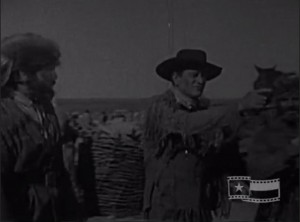
"“The Air Evac Story, or: Better You Should Walk?” is a humorous amateur film that spoofs the United States Air Force’s medical evacuation services. Starring members of the 14th Aeromedical Transport Squadron, the film begins at squadron headquarters at Brooks Air Force Base in San Antonio. It then follows crew members on their daily mission to transport patients, making stops in El Paso and Brackettville. While the voiceover narration commends the squadron for their professionalism, their comedic actions throughout the film tell a different story. Of particular note is a cameo by none other than John Wayne. Charles F. Curtis, a cinematography engineer with the Air Force, made the spoof with his crew around the same time that Wayne was in Brackettville shooting The Alamo (1960). Curtis helped design a working camera track system for the blockbuster film, and Wayne agreed to make a brief appearance in the Air Evac Story as thanks" Texas Archive of the Moving Image.
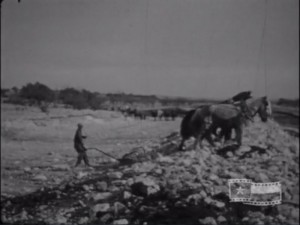
"Produced in the late 1920s, this amateur film documents the construction of the Santa Fe Railway extension connecting San Angelo and Sonora. In 1928, the Atchison, Topeka and Santa Fe Railway Company (Santa Fe) purchased the Kansas City, Mexico and Orient Railway Company of Texas (Orient of Texas). In so doing, they also acquired the company’s system of track lines, 465 miles of which were in Texas. As a subsidiary of Santa Fe, Orient of Texas then began construction on a pair of extension lines: one spanning the 72 miles from Paisano to Presidio and another the 65 miles from San Angelo to Sonora. This amateur film captures early construction on the second, with a small crew using work horses to clear the route and build bridges. The San Angelo-Sonora line was completed on July 1, 1930. Santa Fe abandoned the line in 1976" Texas Archive of the Moving Image.
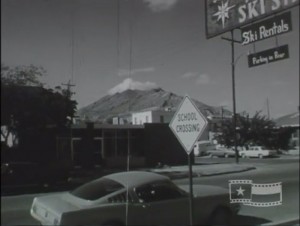
"This film captures scenes of men in El Paso posing, walking, climbing, performing fake fights, and acting out humorous scenes while the man behind the camera experiments with effects and film speed. The outcome is an entertaining film full of interesting visuals" Texas Archive of the Moving Image.
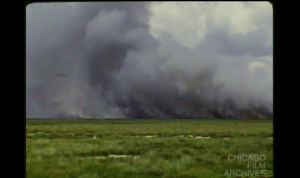
"2 part edited footage of a road trip along the Gulf Coast from Louisiana to the border of Mexico. Includes much natural scenery, often from a moving car, but also documents visits to the Tabasco factory and two ranches. A woman also evokes the Longfellow poem, Evangeline, by taking a wistful walk." Chicago Film Archives
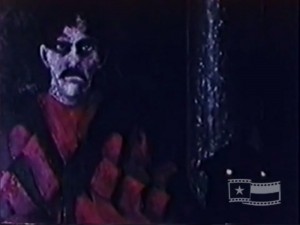
"Manos: The Hands of Fate is a 1966 low-budget horror film written, directed, and produced by El Paso native Harold P. Warren, who also starred in the picture. In the film, a vacationing family gets lost while driving through the Texas desert. Stopping at a mysterious lodge for the night, the family finds themselves captives of a polygamous pagan cult. Shot in Warren’s home town and cast locally, the film premiered at the Capri Theater in downtown El Paso on November 15, 1966, and received largely negative reviews. As Betty Pierce of the El Paso Herald-Post wrote, “A real high point came when the wife, Diane Rystad, was compelled to deliver the line, ‘It’s getting dark,’ at the moment when the El Paso sunshine was glowing its brightest.” Widely recognized as one of the worst films ever made, the movie nevertheless achieved cult status after its appearance on the television comedy series Mystery Science Theater 3000 in 1993" Texas Archive of the Moving Image.
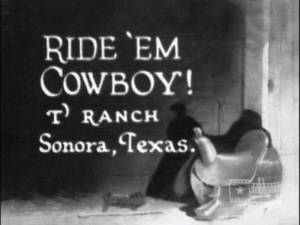
"Produced by Edwin S. Mayer, this 1929 amateur film documents life and work on the T-Half Circle Ranch near Sonora. Ranch hands first herd cattle for branding and de-horning. Then, they turn to working the sheep, sorting them into separate classes before shearing wool. Later, the ranch hands battle a prairie fire on the property. In addition to outlining ranch operations, Mayer also introduces his family and colleagues. At the conclusion, Edwin and his wife Minnie join another couple to explore Carlsbad Cavern in New Mexico. The cave is now the primary attraction of Carlsbad Caverns National Park. Please note, this film contains a racist joke regarding African Americans. The Texas Archive of the Moving Image does not condone this language, but presents the film as it was originally created, because to do otherwise would be the same as to claim this discrimination never existed" Texas Archive of the Moving Image.
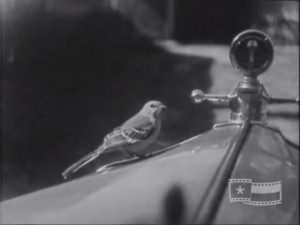
"This film includes material originally shot by the Tilley brothers in the 1910s and 1920s. W.H. Tilley later edited, compiled, and transferred these clips to 16mm, adding caption from his perspective forty years later. Scenes of note include a Krit Motor Car demonstration (1910s), a circus parade on Congress Avenue (facing the Capital, 1912) in Austin. While the brothers worked commercially in filmmaking, these clips exhibit their practice as amateur filmmakers that captured footage of personal experiences" Texas Archive of the Moving Image.
"Effective film transitions spark an interesting story of a trip to Texas. The narration indicates careful preliminary research into the geology, history, economic and social conditions of this state." PSA Journal, Dec. 1955, 37.
Total Pages: 2